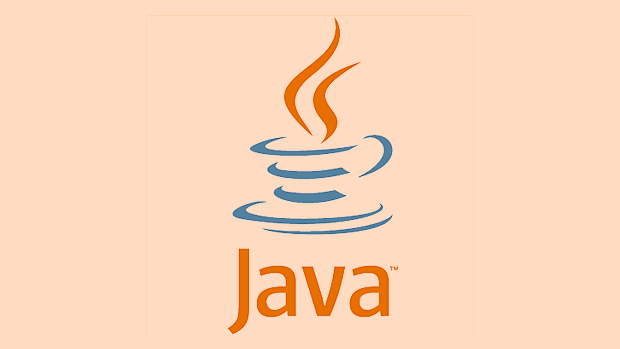OAuth2 is used for authorization, OpenID Connect (OIDC) provides identity authentication based on OAuth2 to confirm user identity. 2. Using Spring Boot and Spring Security is the recommended way to implement OIDC in Java, and spring-boot-starter-oauth2-client dependency needs to be introduced. 3. Configure client-id, client-secret, scope (including openid, profile, email) and issuer-uri of IdP (such as Google) in application.yml to enable automatic metadata discovery. 4. Configure SecurityConfig through @EnableWebSecurity, enable oauth2Login and set the default success page. 5. Use @AuthenticationPrincipal to obtain the OAuth2User object and extract user information such as name, email, picture, etc. from its properties. 6. When supporting multiple providers (such as Google and GitHub), register multiple clients in the configuration and provide corresponding login links. 7. Spring automatically verifies the signature, issuer, audience and validity period of the ID token. The production environment must use HTTPS, and sensitive tokens must be stored encrypted. 8. User information mapping and persistence can be handled through custom OAuth2UserService. Summary: Using Spring Boot configuration drivers allows fast and secure integration of OIDC without writing underlying protocol logic, and managed user authentication by trusted identity providers.

Implementing OAuth2 and OpenID Connect (OIDC) in a Java application allows you to securely handle user authentication and authorization, especially when integrating with identity providers like Google, GitHub, or enterprise solutions like Okta and Auth0. Here's a practical guide to get it working effectively.

1. Understand the Difference Between OAuth2 and OpenID Connect
Before diving into code:
- OAuth2 is for authorization — it lets your app request access to resources on behalf of a user.
- OpenID Connect (OIDC) is built on top of OAuth2 and adds authentication — it verifies who the user is and returns identity information (like email, name).
In short: Use OIDC when you need to log users in and know who they are.

2. Choose the Right Java Framework
The easiest way to implement OIDC in Java is using Spring Security with Spring Boot . It has built-in support for OAuth2 Login and OIDC.
Dependencies (Maven)
<dependency>
<groupId>org.springframework.boot</groupId>
<artifactId>spring-boot-starter-oauth2-client</artifactId>
</dependency>
<dependency>
<groupId>org.springframework.boot</groupId>
<artifactId>spring-boot-starter-web</artifactId>
</dependency>Note: You don't need
starter-oauth2-resource-serverunless your app is also accepting access tokens from other services.
3. Configure Application Properties
Set up your identity provider (IdP) in application.yml or application.properties .
Example: Using Google as OIDC Provider
spring:
security:
oauth2:
client:
Registration:
google:
client-id: your-client-id
client-secret: your-client-secret
scope: openid, profile, email
redirect-uri: "{baseUrl}/login/oauth2/code/{registrationId}"
Provider:
google:
issuer-uri: https://accounts.google.com-
client-idandclient-secret: Get these from the IdP (eg, Google Cloud Console). -
scope:openidenables OIDC;profileandemailfetch user info. -
issuer-uri: Spring uses this to auto-discover OIDC metadata (JWKS, authorization endpoint, etc.).
Tip: You can use any provider that supports OIDC (Auth0, Azure AD, Okta, etc.) — just adjust the issuer URI and client credentials.
4. Enable OAuth2 Login in Spring Security
Create a security configuration class:
@Configuration
@EnableWebSecurity
public class SecurityConfig {
@Bean
public SecurityFilterChain filterChain(HttpSecurity http) throws Exception {
http
.authorizeHttpRequests(authz -> authz
.requestMatchers("/", "/login**", "/error**").permitAll()
.anyRequest().authenticated()
)
.oauth2Login(oauth2 -> oauth2
.defaultSuccessUrl("/home")
);
return http.build();
}
}Now, when a user accesses a secured page, they'll be redirected to Google (or your IdP) to log in.
5. Access User Information After Login
Once authenticated, you can retrieve user details from the OAuth2User .
Example Controller
@GetMapping("/home")
public String home(Model model, @AuthenticationPrincipal OAuth2User principal) {
if (principal != null) {
model.addAttribute("name", principal.getAttribute("name"));
model.addAttribute("email", principal.getAttribute("email"));
model.addAttribute("picture", principal.getAttribute("picture"));
}
return "home";
} The attributes ( name , email , etc.) come from the ID token and/or the UserInfo endpoint, depending on the provider.
6. Handling Multiple Providers
You can support multiple OIDC providers (eg, Google, GitHub, Microsoft):
spring:
security:
oauth2:
client:
Registration:
google:
client-id: ...
client-secret: ...
scope: openid, profile, email
github:
client-id: ...
client-secret: ...
scope: user:email
authorization-grant-type: authorization_code
client-authentication-method: client_secret_postThen, on your login page:
<a href="/oauth2/authorization/google">Sign in with Google</a> <a href="/oauth2/authorization/github">Sign in with GitHub</a>
Spring automatically sets up these endpoints.
7. Token Validation and Security Considerations
- ID Token Validation : Spring Security automatically validates the JWT ID token (signature, issuer, audience, expiration) when using
issuer-uri. - Use HTTPS in production — OIDC relies on secure communication.
- Avoid storing tokens in plain text — if you need to save refresh tokens, encrypt them.
8. Customizing User Processing (Optional)
If you need to map OIDC claims to your app's user model, define a OAuth2UserService :
@Bean
public OAuth2UserService<OAuth2UserRequest, OAuth2User> customOAuth2UserService() {
return userRequest -> {
OAuth2UserService<OAuth2UserRequest, OAuth2User> delegate = new DefaultOAuth2UserService();
OAuth2User oAuth2User = delegate.loadUser(userRequest);
// Add custom logic: map roles, save user to DB, etc.
return new CustomOAuth2User(oAuth2User);
};
}Then wire it into the login flow:
.oauth2Login(oauth2 -> oauth2
.userInfoEndpoint(userInfo -> userInfo
.userService(customOAuth2UserService())
)
)Summary
Implementing OAuth2 and OpenID Connect in Java (especially with Spring Boot) is straightforward:
- Use Spring Security's
spring-boot-starter-oauth2-client - Configure your IdP via
application.yml - Enable OAuth2 login in security config
- Retrieve user info via
@AuthenticationPrincipal - Optionally customize user processing or support multiple providers
It's secure, scalable, and keeps you from managing passwords — let trusted identity providers do the heavy lifting.
Basically, once you've set up the redirect URIs and got the client credentials, the rest is configuration-driven and doesn't require writing low-level OIDC logic yourself.
The above is the detailed content of Implementing OAuth2 and OpenID Connect in a Java Application. For more information, please follow other related articles on the PHP Chinese website!

Hot AI Tools

Undress AI Tool
Undress images for free

Undresser.AI Undress
AI-powered app for creating realistic nude photos

AI Clothes Remover
Online AI tool for removing clothes from photos.

Clothoff.io
AI clothes remover

Video Face Swap
Swap faces in any video effortlessly with our completely free AI face swap tool!

Hot Article

Hot Tools

Notepad++7.3.1
Easy-to-use and free code editor

SublimeText3 Chinese version
Chinese version, very easy to use

Zend Studio 13.0.1
Powerful PHP integrated development environment

Dreamweaver CS6
Visual web development tools

SublimeText3 Mac version
God-level code editing software (SublimeText3)
 Asynchronous Programming Techniques in Modern Java
Jul 07, 2025 am 02:24 AM
Asynchronous Programming Techniques in Modern Java
Jul 07, 2025 am 02:24 AM
Java supports asynchronous programming including the use of CompletableFuture, responsive streams (such as ProjectReactor), and virtual threads in Java19. 1.CompletableFuture improves code readability and maintenance through chain calls, and supports task orchestration and exception handling; 2. ProjectReactor provides Mono and Flux types to implement responsive programming, with backpressure mechanism and rich operators; 3. Virtual threads reduce concurrency costs, are suitable for I/O-intensive tasks, and are lighter and easier to expand than traditional platform threads. Each method has applicable scenarios, and appropriate tools should be selected according to your needs and mixed models should be avoided to maintain simplicity
 Best Practices for Using Enums in Java
Jul 07, 2025 am 02:35 AM
Best Practices for Using Enums in Java
Jul 07, 2025 am 02:35 AM
In Java, enums are suitable for representing fixed constant sets. Best practices include: 1. Use enum to represent fixed state or options to improve type safety and readability; 2. Add properties and methods to enums to enhance flexibility, such as defining fields, constructors, helper methods, etc.; 3. Use EnumMap and EnumSet to improve performance and type safety because they are more efficient based on arrays; 4. Avoid abuse of enums, such as dynamic values, frequent changes or complex logic scenarios, which should be replaced by other methods. Correct use of enum can improve code quality and reduce errors, but you need to pay attention to its applicable boundaries.
 Understanding Java NIO and Its Advantages
Jul 08, 2025 am 02:55 AM
Understanding Java NIO and Its Advantages
Jul 08, 2025 am 02:55 AM
JavaNIO is a new IOAPI introduced by Java 1.4. 1) is aimed at buffers and channels, 2) contains Buffer, Channel and Selector core components, 3) supports non-blocking mode, and 4) handles concurrent connections more efficiently than traditional IO. Its advantages are reflected in: 1) Non-blocking IO reduces thread overhead, 2) Buffer improves data transmission efficiency, 3) Selector realizes multiplexing, and 4) Memory mapping speeds up file reading and writing. Note when using: 1) The flip/clear operation of the Buffer is easy to be confused, 2) Incomplete data needs to be processed manually without blocking, 3) Selector registration must be canceled in time, 4) NIO is not suitable for all scenarios.
 How Java ClassLoaders Work Internally
Jul 06, 2025 am 02:53 AM
How Java ClassLoaders Work Internally
Jul 06, 2025 am 02:53 AM
Java's class loading mechanism is implemented through ClassLoader, and its core workflow is divided into three stages: loading, linking and initialization. During the loading phase, ClassLoader dynamically reads the bytecode of the class and creates Class objects; links include verifying the correctness of the class, allocating memory to static variables, and parsing symbol references; initialization performs static code blocks and static variable assignments. Class loading adopts the parent delegation model, and prioritizes the parent class loader to find classes, and try Bootstrap, Extension, and ApplicationClassLoader in turn to ensure that the core class library is safe and avoids duplicate loading. Developers can customize ClassLoader, such as URLClassL
 Handling Common Java Exceptions Effectively
Jul 05, 2025 am 02:35 AM
Handling Common Java Exceptions Effectively
Jul 05, 2025 am 02:35 AM
The key to Java exception handling is to distinguish between checked and unchecked exceptions and use try-catch, finally and logging reasonably. 1. Checked exceptions such as IOException need to be forced to handle, which is suitable for expected external problems; 2. Unchecked exceptions such as NullPointerException are usually caused by program logic errors and are runtime errors; 3. When catching exceptions, they should be specific and clear to avoid general capture of Exception; 4. It is recommended to use try-with-resources to automatically close resources to reduce manual cleaning of code; 5. In exception handling, detailed information should be recorded in combination with log frameworks to facilitate later
 How does a HashMap work internally in Java?
Jul 15, 2025 am 03:10 AM
How does a HashMap work internally in Java?
Jul 15, 2025 am 03:10 AM
HashMap implements key-value pair storage through hash tables in Java, and its core lies in quickly positioning data locations. 1. First use the hashCode() method of the key to generate a hash value and convert it into an array index through bit operations; 2. Different objects may generate the same hash value, resulting in conflicts. At this time, the node is mounted in the form of a linked list. After JDK8, the linked list is too long (default length 8) and it will be converted to a red and black tree to improve efficiency; 3. When using a custom class as a key, the equals() and hashCode() methods must be rewritten; 4. HashMap dynamically expands capacity. When the number of elements exceeds the capacity and multiplies by the load factor (default 0.75), expand and rehash; 5. HashMap is not thread-safe, and Concu should be used in multithreaded
 Explained: Java Polymorphism in Object-Oriented Programming
Jul 05, 2025 am 02:52 AM
Explained: Java Polymorphism in Object-Oriented Programming
Jul 05, 2025 am 02:52 AM
Polymorphism is one of the core features of Java object-oriented programming. Its core lies in "one interface, multiple implementations". It implements a unified interface to handle the behavior of different objects through inheritance, method rewriting and upward transformation. 1. Polymorphism allows the parent class to refer to subclass objects, and the corresponding methods are called according to the actual object during runtime; 2. The implementation needs to meet the three conditions of inheritance relationship, method rewriting and upward transformation; 3. It is often used to uniformly handle different subclass objects, collection storage and framework design; 4. When used, only the methods defined by the parent class can be called. New methods added to subclasses need to be transformed downward and accessed, and pay attention to type safety.
 Effective Use of Java Enums and Best Practices
Jul 07, 2025 am 02:43 AM
Effective Use of Java Enums and Best Practices
Jul 07, 2025 am 02:43 AM
Java enumerations not only represent constants, but can also encapsulate behavior, carry data, and implement interfaces. 1. Enumeration is a class used to define fixed instances, such as week and state, which is safer than strings or integers; 2. It can carry data and methods, such as passing values ??through constructors and providing access methods; 3. It can use switch to handle different logics, with clear structure; 4. It can implement interfaces or abstract methods to make differentiated behaviors of different enumeration values; 5. Pay attention to avoid abuse, hard-code comparison, dependence on ordinal values, and reasonably naming and serialization.







